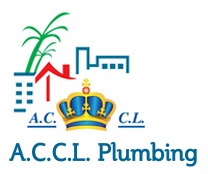The plumbing industry is undergoing a significant transformation with the introduction of robotic technologies designed to inspect and clean pipes. These robots are equipped with advanced sensors, cameras, and cleaning tools, enabling them to navigate through complex pipe systems and identify potential issues before they become major problems.
Benefits of Robotic Plumbing Technologies
1. Improved Efficiency: Robotic plumbing technologies can inspect and clean pipes faster and more accurately than traditional methods, reducing the time and cost associated with plumbing maintenance.
2. Enhanced Safety: Robots can access tight spaces and hazardous environments, reducing the risk of injury to human plumbers and minimizing the potential for accidents.
3. Increased Accuracy: Advanced sensors and cameras enable robots to detect even the smallest defects and blockages, allowing for targeted repairs and reducing the likelihood of costly misdiagnoses.
4. Reduced Downtime: Robotic plumbing technologies can perform inspections and cleaning during off-peak hours, minimizing disruptions to building occupants and reducing the impact on daily operations.
Types of Robotic Plumbing Technologies
1. Pipe Inspection Robots: Equipped with high-definition cameras and sensors, these robots can navigate through pipes to detect defects, blockages, and corrosion.
2. Pipe Cleaning Robots: Designed to remove blockages and debris, these robots can be equipped with various cleaning tools, such as water jets or mechanical scrapers.
3. Autonomous Pipe Inspection and Cleaning Systems: These systems combine inspection and cleaning capabilities, allowing robots to autonomously navigate and maintain pipe systems.
Applications of Robotic Plumbing Technologies
1. Residential Plumbing: Robotic plumbing technologies can be used to inspect and clean pipes in homes, reducing the risk of costly repairs and minimizing disruptions to daily life.
2. Commercial Plumbing: Robots can be used to maintain pipe systems in commercial buildings, such as office buildings, hotels, and hospitals, reducing downtime and improving overall efficiency.
3. Industrial Plumbing: Robotic plumbing technologies can be applied in industrial settings, such as manufacturing facilities and processing plants, to maintain complex pipe systems and prevent costly shutdowns.
Future Developments
As robotic plumbing technologies continue to evolve, we can expect to see advancements in areas such as:
1. Artificial Intelligence: Integration of AI algorithms to enable robots to learn from experience and improve their inspection and cleaning capabilities.
2. Advanced Sensors: Development of more sophisticated sensors to detect subtle changes in pipe conditions and predict potential issues.
3. Increased Autonomy: Robots that can operate independently for extended periods, reducing the need for human intervention and increasing efficiency.
By embracing robotic plumbing technologies, the plumbing industry can improve efficiency, reduce costs, and enhance the overall quality of pipe maintenance and repair services.

